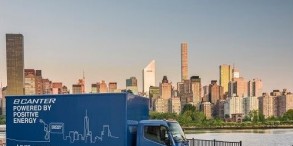Weather Satellite ”Himawari No.9" Safely in Orbit
Up went the H2A rocket No. 31 off the Tanegashima Space Center, Kagoshima, October 2 afternoon with Japan's second meteorological satellite Himawari No.9.
The rocket released the two auxiliary rockets about a minute and 50 seconds after liftoff and let go the first-stage rocket six minutes 40 seconds afterward. At about 28 minutes after liftoff, 15:48, the rocket launched Himawari No.9 as scheduled into an orbit circling around the earth at an altitude of 260 kilometers.
Now, H2A has successfully launched 25 satellites in a row to lift its success rate up to 96.8%, way beyond the reliability rate of 95%. The rocket will keep on ascending to reach an orbit 35,800 kilometers nine days later - on about November 11.
Himawari No.9 amounts identical functions as its predecessor Himawari No.8 currently on operation since last July. No.9 will serve a backup for No.8 and will be fully operative 6 years afterward in 2022.
At the press interview at the Tanegashima Space Center, Hiroo Sakashita of the Ministry of Land, Infrastructure and Transport in charge of the Meteorological Agency told the press:
"Now, we have two new-generation satellites in operation to guarantee the highest level of weather observation for the sake of safety and security of the people."
Mitsubishi Heavy Industry's Michihiko Abe, Chief of the Space Domain Division, said:
"Now that we have succeeded in safely launching weather satellites 25 times in succession, we can claim to the world a high rate of reliability with some confidence. This is a wind blowing for us."
Chief director of JAXA (Japan Aerospace Exploration Agency) Naoki Okumura comments:
"The successful launch this time shows we are making progress a step at a time in space technology and is certainly one great piece of momentum for the development for Japan's new-generation rocket H3 slated for launching in 2021."
One last episode to highlight the launch of H2A this time: an artistic wrapping that decorated the body of the rocket! The creator of a popular manga "Space Brothers", Chuya Koyama, had assembled thousands of space-minded children's drawings into a huge wrapper to cover the body of the rocket. Koyama comments:
"So glad to have helped all those kids rise into space!" (Nathan Shiga)










